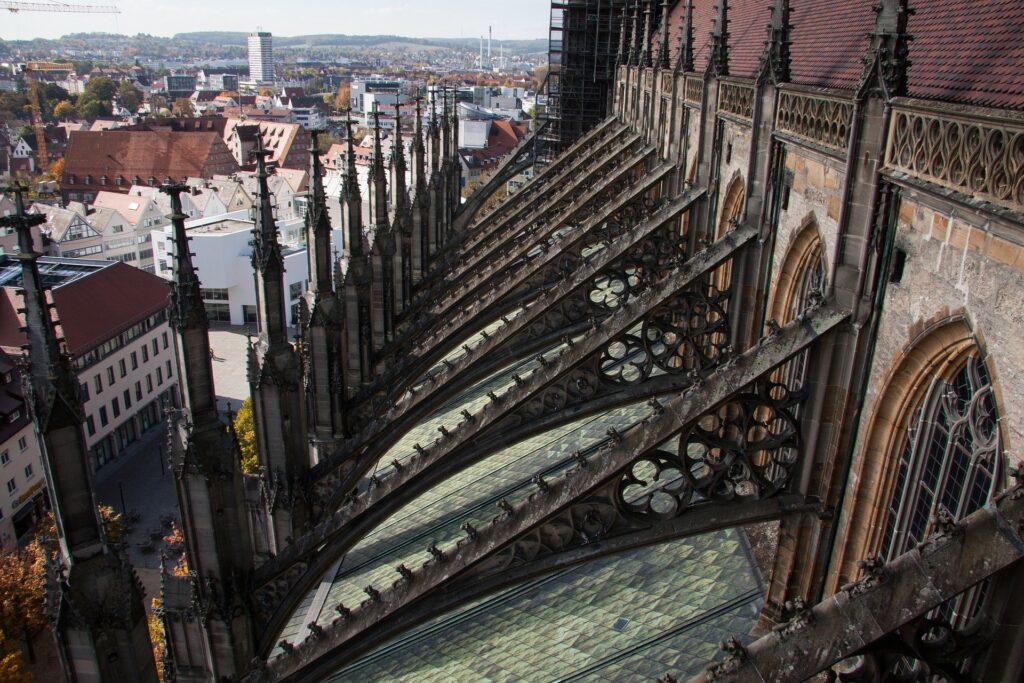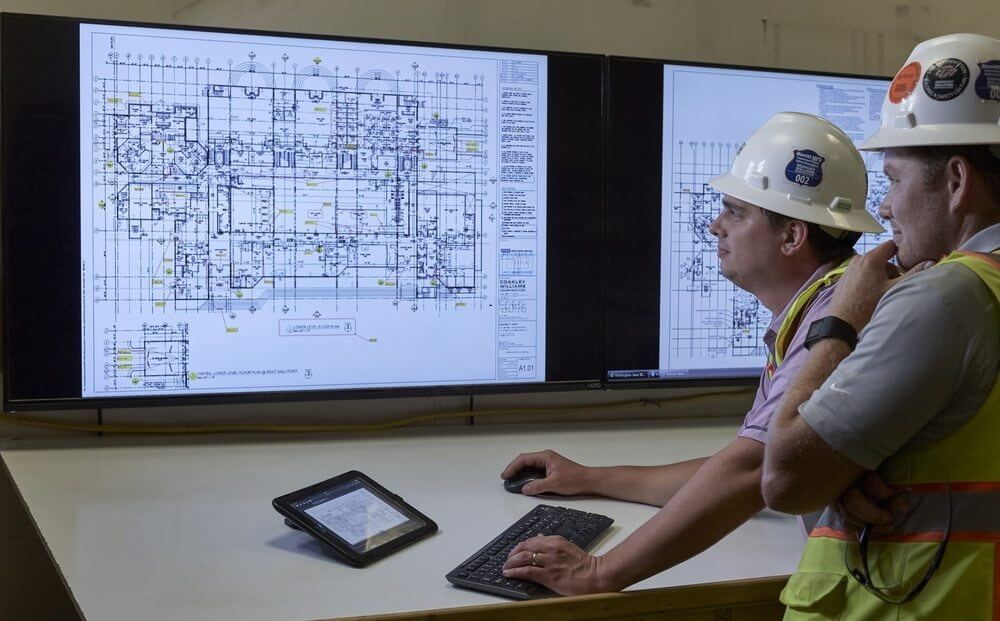What is Flying Buttress?
An architectural support that bears the load of roofs or vaulted ceilings is a flying buttress and they are designed to ensure that the architectural integrity of buildings is preserved long into the future. The flying buttresses have been around since the Roman and Greek times, but it wasn’t until Gothic architecture that these features really became prominent.
Any type of buttress will transfer the weight from walls onto a solid pillar. Since the walls are not holding the weight of the building, they can then be used to hold latticework and even windows. Those windows and latticework would collapse under the weight of the roof if it weren’t for the flying buttresses.
A flying buttress is quite different than a regular buttress, thanks to the arch that connects the standard pillar to the roof. While a single flying buttress was common at first, it did not take long to have many of them stacked up to hold up an extremely heavy structure.
Some flying buttresses are quite simple, but many of them have been created with elaborate stonework and even sculptures. A few even have massive gargoyles, which may seem hideous, but serve many purposes including drainage.
In the past, flying buttresses were built on the ground and then raised into place. This was quite dangerous, and it was also a time-consuming process.
A Few Popular Flying Buttresses
The Notre Dame Cathedral in Paris
Stone buildings are quite heavy, and the roofs placed on top can be too much for any type of wall to support. The Notre Dame Cathedral has huge buttresses that were built away from the walls. This allowed the inside to be open and massive, while allowing the walls to hold the stunning stained-glass windows. The elaborate pinnacles created extra weight, but the buttresses were then capable of carrying even more of a lateral load from the exterior walls.
The French Basilica of St. Magdalene
The French Basilica of St. Magdalene may have been constructed around 1100, but that didn’t stop it from having a flying buttress. The architects in medieval times experimented with arches and vaults to create soaring interiors. While they didn’t realize that buttresses were the way to go at first, they created similar items with engaged columns and projecting strips. After some time, the architects realized that the depth of those items were more important than the width.
San Giorgio Maggiore in Italy
When Andrea Palladio, a Renaissance architect, created his buttresses, he made them more slender than the original ones. He also chose to extend them further away from the walls, to create a better weight bearing feature that kept the weight off the walls and away from the rest of the structure.
Saint Pierre in Chartres
Saint Pierre was constructed between the eleventh and fourteenth centuries and it has been rebuilt since that time. Gothic features were included during the rebuilding process and it ensured that this cathedral was a prominent fixture that was part of Victor Hugo’s The Hunchback of Notre Dame.
National Cathedral in Washington DC
The National Cathedral is what the Cathedral Church of Saint Peter and Saint Paul is normally called. This cathedral was constructed with more than two hundred stained-glass windows and more than one hundred gargoyles. Of course, there are multiple flying buttresses to ensure that all the gargoyles and stained-glass windows can be held by the walls and do not collapse under the weight of the ceiling.
Burj Khalifa in United Arab Emirates
When you are looking at many different flying buttresses, none of them will look as unique as the y-shaped ones that were used for the Burj Khalifa in the United Arab Emirates. The flying buttresses utilize a hexagonal hub, so that every wing of the building has its own core and columns.
Adobe Mission in New Mexico
The Adobe Mission, or St. Francis of Assisi Mission Church, can be found in Ranchos de Taos. The flying buttresses in this building are not like the original Gothic style. Instead, these buttresses are shaped like a beehive. The materials used are native adobe, which needs to be resurfaced each year. This is one of the only buttresses, and buildings, where volunteers arrive each year like clockwork to resurface the adobe with a mixture of straw and mud. This ensures that the walls, buttresses, and roof stay strong.
The Liverpool Metropolitan Cathedral in England
There was a time when buttresses were considered a necessity in engineering, but nowadays, they are a design element. Ironically, the buttresses that you see on the Liverpool Metropolitan Cathedral in England are not needed to hold up any parts of the building. They do add visual appeal though, which makes this cathedral look even better than it would without them. Of course, the buttresses make it difficult to truly determine what type of style this building should be considered. Since many elements are modern, it could be considered an excellent example of modern architecture. However, the buttress feature gives it a Gothic feel, which could make it part of what is considered the Gothic Revival style.
As you can see, flying buttresses are used in buildings all over the world! While these buttresses have been used in buildings for decades, they are not going away anytime soon. In fact, flying buttresses are becoming bigger and better, which is making them even more appealing to the eyes.
If you are planning on constructing a large building and want to include stained-glass windows, or other intricate features on the walls, you must use a flying buttress. This feature will ensure that the weight of the ceiling stays off the walls, allowing you to use the walls for other items. Of course, the flying buttress will also add visual appeal to the building, making it look better than it would without this stunning feature.
If you are not used to flying buttresses, you will want to look at the ones used in the buildings mentioned above, so you can get an idea of what they look like and how wonderful they can make any building look when it is completed.




